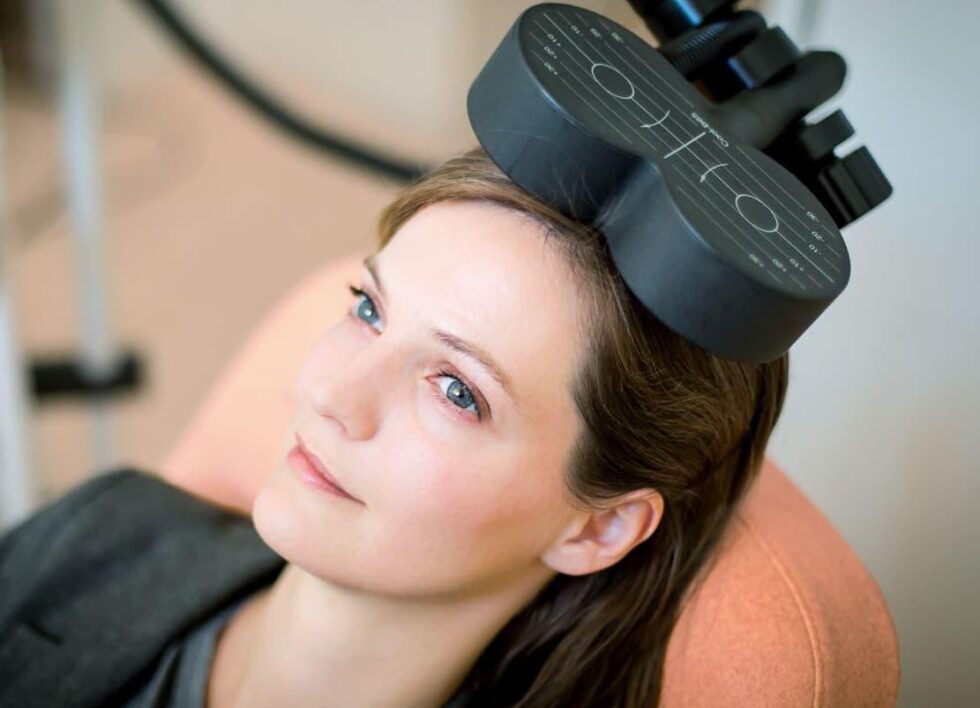
In recent years, Transcranial Magnetic Stimulation (TMS) has emerged as a groundbreaking treatment for various mental health disorders, particularly depression. As traditional treatments like psychotherapy and medication don’t work for everyone, TMS Treatment APN offers a novel approach that harnesses the power of magnetic fields to stimulate brain activity. This article aims to explore TMS treatment in-depth, examining its mechanisms, benefits, potential side effects, and future prospects.
What is TMS Treatment APN?
Definition and Mechanism
Transcranial Magnetic Stimulation (TMS) is a non-invasive procedure that uses magnetic fields to stimulate nerve cells in the brain. It primarily targets areas of the brain associated with mood regulation, particularly the prefrontal cortex. During TMS sessions, a device placed near the patient’s scalp delivers brief magnetic pulses that induce electrical currents in specific brain regions, which can enhance or inhibit neural activity.
Historical Context
TMS was first developed in the late 1980s as a research tool for studying brain function. However, its potential therapeutic applications became apparent in the 1990s when studies demonstrated its efficacy in treating major depressive disorder. The U.S. Food and Drug Administration (FDA) approved TMS for depression in 2008, marking a significant milestone in the treatment of mental health disorders.
The TMS Treatment APN Process

Initial Assessment
Before starting TMS treatment, a thorough assessment is conducted to determine if the patient is a suitable candidate. This assessment typically involves:
Medical History: A comprehensive review of the patient’s medical and psychiatric history.
Psychological Evaluation: An evaluation to assess the severity of depression or other conditions.
Medication Review: Discussion of current medications and past treatments.
The TMS Session
A typical TMS session lasts about 30 to 40 minutes and involves the following steps:
Preparation: The patient is seated comfortably in a chair, and a device resembling a helmet is placed on their head.
Calibration: The device is calibrated to target specific areas of the brain. The practitioner may perform an initial test to determine the appropriate intensity of magnetic pulses based on the patient’s response.
Stimulation: The TMS device delivers magnetic pulses at regular intervals. Patients usually feel a tapping sensation on their scalp, similar to a light knock. While discomfort is minimal, some patients may experience mild headaches or scalp sensitivity.
Post-Session: After the session, patients can resume their daily activities immediately, as there is no recovery time required.
Treatment Protocol
TMS treatment typically involves multiple sessions over several weeks. A common protocol consists of five sessions per week for four to six weeks. The total number of sessions may vary depending on the individual’s response to treatment.
Efficacy of TMS Treatment APN
Clinical Evidence
Numerous clinical studies have demonstrated the effectiveness of TMS in treating major depressive disorder. Research shows that approximately 50% to 60% of patients experience a significant reduction in depressive symptoms after completing a full course of TMS treatment. Moreover, some patients achieve remission, meaning their symptoms disappear entirely.
Comparison to Traditional Treatments
TMS Treatment APN is often considered when traditional treatments, such as antidepressant medications or psychotherapy, have proven ineffective. Unlike medications, which can take weeks to show results and often come with side effects, TMS provides quicker relief for many patients. Additionally, TMS does not carry the risk of systemic side effects associated with pharmaceuticals.
Applications Beyond Depression

While TMS Treatment APN is primarily known for treating depression, ongoing research is exploring its efficacy for other mental health conditions, including:
Anxiety Disorders: Initial studies suggest that TMS may alleviate symptoms of anxiety, particularly in patients with comorbid anxiety and depression.
Post-Traumatic Stress Disorder (PTSD): TMS is being investigated as a potential treatment for PTSD, with preliminary results showing promise in reducing intrusive thoughts and hyperarousal symptoms.
Obsessive-Compulsive Disorder (OCD): Some studies indicate that TMS may help reduce OCD symptoms by targeting specific brain circuits.
Chronic Pain: Research is ongoing to evaluate TMS’s effectiveness in managing chronic pain conditions, leveraging its influence on brain areas involved in pain perception.
Benefits
Non-Invasive Nature
One of the most significant advantages of TMS is its non-invasive nature. Unlike surgical interventions, TMS Treatment APN requires no anesthesia and has minimal risks. Patients can undergo treatment without the need for hospitalization.
Minimal Side Effects
TMS is generally well-tolerated, with fewer side effects compared to traditional antidepressant medications. The most common side effects include mild headaches and scalp discomfort, which usually resolve shortly after the session.
Quick Results
Many patients report experiencing improvements in their mood within a few sessions, making TMS an attractive option for those seeking faster relief from depressive symptoms.
Personalized Treatment
TMS treatment can be tailored to individual needs. Practitioners can adjust the stimulation parameters to target specific brain regions, enhancing the treatment’s efficacy for each patient.
Potential Side Effects and Considerations
Common Side Effects
While TMS Treatment APN is generally safe, patients should be aware of potential side effects, including:
Headaches: Mild headaches may occur after sessions but typically resolve quickly.
Scalp Discomfort: Some patients may experience temporary discomfort at the site of stimulation.
Fatigue: A few patients report feeling tired after sessions.
Rare Side Effects
Though rare, TMS Treatment APN can cause more serious side effects, such as:
Seizures: The risk of seizures exists, particularly in individuals with a history of seizures or epilepsy. This risk is very low and can be mitigated through proper screening.
Cognitive Changes: Some patients may report temporary changes in cognition, such as memory issues or difficulty concentrating.
Contraindications
TMS Treatment APN may not be suitable for everyone. Certain contraindications include:
Metal Implants: Patients with non-removable metal implants in the head may be ineligible for TMS.
History of Seizures: Individuals with a history of seizures should approach TMS with caution.
Certain Medical Conditions: Conditions such as bipolar disorder and severe anxiety may require additional evaluation before starting TMS.
The Role of TMS Treatment APN in Mental Health Care
Complementary Approach
TMS is often considered a complementary treatment alongside traditional therapies. Many mental health professionals recommend combining TMS with psychotherapy, allowing patients to address underlying issues while benefiting from the symptom relief that TMS provides.
Changing Perspectives on Mental Health
As awareness of mental health issues grows, so does the acceptance of innovative treatments like TMS. The success of TMS has contributed to shifting perspectives on mental health care, emphasizing the importance of diverse treatment options to cater to individual needs.
Accessibility and Availability
While TMS is gaining traction, access to treatment can vary by location. Efforts are being made to increase awareness and availability of TMS, particularly in underserved areas. As more practitioners become trained in TMS therapy, its reach is likely to expand.
The Future of TMS Treatment APN

Ongoing Research
The future of TMS Treatment APN looks promising, with ongoing research investigating its potential applications and mechanisms. Studies are exploring optimal treatment protocols, long-term efficacy, and the integration of TMS with other therapeutic modalities.
Technological Advancements
Advancements in technology may enhance the effectiveness of TMS Treatment APN. Researchers are exploring the development of more sophisticated TMS devices, allowing for more precise targeting of brain regions and improved patient outcomes.
Public Awareness and Education
Increasing public awareness about TMS is essential for its acceptance as a mainstream treatment. Educational initiatives aimed at both healthcare professionals and the general public can help dispel misconceptions and encourage individuals to seek appropriate care.
Conclusion
Transcranial Magnetic Stimulation (TMS) represents a significant advancement in the treatment of mental health disorders, particularly depression. Its non-invasive nature, rapid results, and minimal side effects make it an appealing option for those who have not found relief through traditional treatments. As research continues to unveil the potential applications of TMS, its role in mental health care is likely to expand.
The journey toward understanding and treating mental health issues is ongoing, and TMS stands at the forefront of this evolution. By providing patients with effective, personalized treatment options, TMS has the potential to transform lives, offering hope to those struggling with mental health challenges. As we look to the future, the integration of TMS into comprehensive mental health care will undoubtedly play a pivotal role in improving patient outcomes and enhancing the quality of life for countless individuals.


